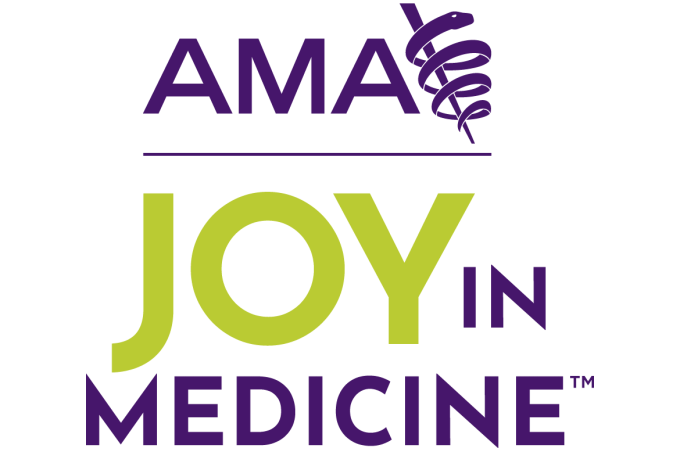Augmented intelligence (AI)—often called artificial intelligence—has emerged as a transformative technological force in health care, offering promising solutions to alleviate the growing burden on physicians while enhancing patient care. By harnessing the power of health care AI, physicians and other health professionals at Geisinger can streamline processes, optimize workflows and ultimately reclaim valuable hours in the day.
Emily Fry, MHA, is vice president of innovation for the Steele Institute for Health Innovation at Geisinger. She explained the critical distinction between mere automation and augmented intelligence-driven automation.
“I like to use the analogy of the brain and the muscles. I have the muscles today … to pick things up and put them down,” she said. “AI is the layer to truly make automation intelligent, and that’s the brain. It tells you when something might be too heavy, maybe ask for help, or you shouldn’t pick it up.”
“Automation provides greater business flexibility. This truly impacts physicians and care teams because it gives them the time back to focus at the bedside and spend more time with the patient, who matters the most,” she said, emphasizing that it permits Geisinger “to take those administrative burdens off their hands.”
Additionally, “it’s a scalable solution. For example, since 2019, Geisinger has saved almost 500,000 hours through automation and every day we’re working on new stuff to continue saving time,” Fry said. Geisinger is a member of the AMA Health System Program that provides enterprise solutions to equip leadership, physicians and care teams with resources to help drive the future of medicine.
“Today,” she added, “we have over 110 live automations, which are running across the organization. … That means that a specific process that a human used to do is now running through or augmented by automation.”
“While for organizations it is important to note the return on investment, what’s not noted in the ROI here is the employee satisfaction and engagement which stems from saving these hours of their time,” she said. “We are able to focus on what’s important, or merely catch up in areas where we may have administrative backlogs.”
Here is how Geisinger uses AI to improve patient care and reduce the burden placed on physicians and their care teams to add hours back to their days.
Admission notifications
Physicians and care teams are required to notify payers of a patient’s admission. To reduce the burden on physicians and other health professionals, Geisinger has automation to help. AI works behind the scenes to notify the payer.
“When the patient is admitted, the payer is notified of their admission. It takes that administrative burden off the clinician and eliminates unnecessary administrative distraction from the patient care,” Fry said, noting that since deploying in 2021, the automation has saved over 300 hours of work.
“We’re continuing to push the bounds of clinical automations, where it makes sense and safe to play a role in augmenting the clinicians against administrative burden and focusing on work that is top of license,” she said.
For example, Geisinger is building automated prescription refills alongside pharmacy using conversational AI and automation to collect appropriate information from the patient and then trigger automations based on information for medication refills. Rather than your doctor having hundreds of inbasket messages, we can follow clinical guidelines to prescribe, automate some of those prescriptions and keep the physician or pharmacist in the loop,” Fry said. “So again, it’s overlaying the AI capabilities with automation to further enhance the work we’re doing today.”
Appointment cancellation
Ob-gyns are very busy and there is an alarming trend of many obstetric units shutting down across the country, so access continues to be a challenge. Geisinger has seen this happen in their area and has had to account for a growth in demand due to other clinics shutting their doors.
When you get pregnant, an OB office typically schedules all your necessary visits up front, so you have access secured at the time of conception and until you have your baby. Some people have more if they’re high-risk,” Fry said. But if the baby is born early, those appointments are not canceled unless the patient calls the office to switch appointment needs.
To improve this process, when a patient has their baby, a note is placed in the clinical record. What we have done is utilize AI to use that information as a trigger to indicate if they have had their baby and the automation will cancel their prenatal appointments and schedule a postpartum appointment with the patient.
What this does for the organization “is it frees up their calendar to see more patients who need those appointments,” Fry said. This ensures that there are no “missed appointments by a patient because they actually don’t need that type of appointment anymore. Before this, often towards the end of the pregnancy patients would miss appointments because they’re focused on their newborn, still recovering, or they’re still in the hospital.”
The work allows physicians to see more patients while also reducing “gaps in access to patients who really need those appointments from a prenatal standpoint,” she said.
The AMA has developed advocacy principles that build on its AI policy. These principles (PDF) address the development, deployment and use of health care AI, with particular emphasis on:
- Health care AI oversight.
- When and what to disclose to advance AI transparency.
- Generative AI policies and governance.
- Physician liability for use of AI-enabled technologies.
- AI data privacy and cybersecurity.
- Payer use of AI and automated decision-making systems.
AI also is being used at Geisinger to spot any missing and required documentation in patient charts, such as inpatients’ daily weight or other vitals. If there is missing documentation, the AI will prompt a nurse manager to check in with nurses to properly document care received. Since implementation in 2021, out of 283,000 patient encounters, this AI-enabled process has saved a total of 107,000 hours in chart-documentation auditing and allowed nurses to focus more on patient care rather than auditing procedures.
Learn more with the AMA about the emerging landscape of augmented intelligence in health care (PDF).




